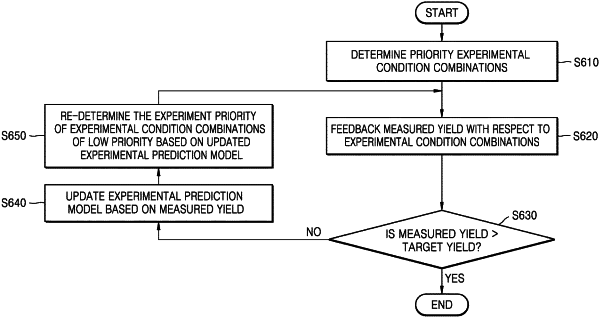| CPC G06N 3/08 (2013.01) [G06N 3/047 (2023.01)] | 17 Claims |

|
1. A method of optimizing experimental conditions by using a neural network, the method comprising:
receiving, in a form of a descriptor, structural information of a reactant and structural information of a product, the structural information indicating a structure of an atom level of a substance included in the reactant or the product, wherein the descriptor is an index value used to express a feature of the substance;
generating, based on the structural information of the reactant and the structural information of the product, experimental condition combinations by combining one or more experimental conditions for producing the product;
calculating a prediction yield of the product and a prediction accuracy of the prediction yield for each of the experimental condition combinations by using an experimental prediction model based on a neural network;
determining an experiment priority of a respective experimental condition combination based on the prediction yield and the prediction accuracy, wherein when all of prediction yields of the experimental condition combinations are less than a first predetermined reference yield, the experiment priority is determined in an order of a low prediction accuracy such that an experimental condition combination having a lowest prediction accuracy has a highest experiment priority; and
updating the experimental prediction model based on a result of an experiment, which is preferentially performed according to a higher experiment priority.
|